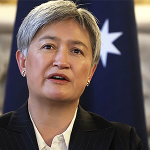In September last year, Russell Broadbent and a group comprising scientists, health professionals, lawyers, and academics, wrote to the Prime Minister calling for an immediate suspension of the Covid mRNA shots. The letter contained a report by Canadian virologist Dr David Speicher who claimed to have found concerning levels of residual DNA in three Australian vials of Covid mRNA vaccines – exceeding the TGA’s safety limit by 7 to 145 times.
This report confirmed similar findings from eight other independent laboratories in the US, Japan, Germany, Canada, and France. A number of these studies have now been published in peer-reviewed literature.
Despite this mounting evidence, therapeutic regulators in Australia and abroad continue to refute documented claims and dismiss concerns raised by scientists and health professionals.
Since the September letter to the Prime Minister, there have been several exchanges in this high-stakes scientific discussion, and additional information, in the form of peer-reviewed publications and emails obtained under freedom of information (FOI), has added weight to the concerns being raised by the group. Let’s take a closer look.
The September 20 letter called for an immediate suspension of the mRNA Covid vaccines, based on the Speicher Report, was followed by an additional letter on September 25 addressing specific points of concern by the over 50 cosignatories in a five-page referenced scientific summary of the evidence. This summary highlighted concerns regarding the potential for DNA encapsulated in lipid nanoparticles to ‘integrate into human cells, potentially leading to genomic instability, cancers, immune system disruption, and adverse hereditary effects’.
The response to these initial letters appeared in the form of a media statement issued by the TGA on October 18 entitled Addressing misinformation about excessive DNA in the mRNA vaccines followed by a letter dated Oct 31 from Minister Butler’s Chief of Staff, Nick Martin, who had been delegated to reply. In his letter, Mr Martin stated that while offering an ‘interesting perspective’ the Science Summary ‘lack(ed) the necessary rigour and supporting evidence to substantiate the claims’ making it difficult to draw a balanced conclusion. He then referred to the TGA’s media statement which states, ‘these reports are based on studies that currently fall short of the scientific rigor expected in pharmaceutical testing and are contributing to the spread of vaccine misinformation’ and ‘as such, the results are not robust or reliable, and are creating confusion and concern regarding the safety of vaccines’.
In its statement, the TGA asserts ‘all Covid vaccines approved in Australia have been rigorously assessed and meet our high standards for safety, quality, and efficacy’. However, the scientific and health community are right to raise concerns for several reasons. Firstly, it is important to note that all Covid vaccines in Australia were approved through the TGA’s provisional approval pathway, requiring a lower burden of proof with no medium or long-term safety data with no carcinogenicity or genotoxicity studies done before provisional approval. For this reason, a higher level of vigilance is demanded in monitoring for side effects and safety signals by both clinicians and the TGA.
Additionally, it is now well documented that the product tested in Pfizer’s clinical trials was manufactured using different methods (process 1) to that used to manufacture the product administered to the population (process 2), raising serious questions about trial data validity and safety. Scientists agree ‘the product IS the process’ meaning the clinical trials used to assess a product made using one method, do not apply to a product made using an entirely different method. This is the case with the Covid shots. The products used in the trials to gain approval were replicated synthetically in the lab. However, production was scaled by using bacteria, e.coli, to replicate the mRNA. This process has well-documented challenges including removing residual DNA and bacterial by-products like endotoxin.
In short, the mRNA vaccine administered to the population was not the same product used in the pre-approval clinical trials. In addition, though now somewhat redundantly, clinical trials were too short to determine the incidence of medium to long-term disease processes including cancer.
It would be reasonable to assume disease signals would be actively monitored. Not so. When the TGA was asked for pharmacovigilance data on cancerous and non-cancerous disease, a freedom of information request revealed the information ‘does not exist’ and instead must be sought from passive surveillance sources such as ABS, and the Australian Institute for Health and Welfare.
Notably, the TGA’s Database of Adverse Event Notifications (DAEN) reveals more adverse event reports (including deaths) than for all other vaccines combined for the last 50 years. One might call this a ‘safety signal’.
The TGA’s October 18 media statement assertions were addressed in a further letter from Mr Broadbent and the group on October 29, 2024 along with a fully referenced 36-page supplement Addressing allegations that DNA contamination in the mRNA shots is misinformation. This evidence-based piece systematically addressed the TGA’s concerns, challenging contested points including testing inconsistencies, the validity of DNA detection, and the lack of pre-approval carcinogenicity (cancer-causing) and genotoxicity (gene-altering) testing. It is well worth the read.
The delegated response came again from Health Ministry Chief of Staff, Nick Martin on October 27. He advised the Australian government was not prepared to suspend the vaccines by making ‘such a large impactful decision that would unduly worry Australians’ and the evidence presented did ‘not support such a large and important decision’.
Meanwhile, behind the scenes, the TGA had been busy. On November 7, the TGA released testing data from 28 batches from two vaccine manufacturers showing all tested batches had residual DNA levels below the regulatory limit of 10 nanograms per dose. However, this disclosure did little to alleviate concerns as none of the tested vials were registered before 2023. Indeed, the TGA did not commence testing its batches until late 2023, right about the time they confirmed the presence of the controversial SV40 promoter-enhancer sequence in the Pfizer product, after this information was made public by scientist and genomics expert Kevin McKernan. Before this, the TGA relied on the vaccine manufacturers for batch testing data.
There is evidence to suggest that later batches differ from earlier batches as reflected in the number of side effects reported, and have been independently assessed to be ‘cleaner’ presumably due to improved manufacturing processes. This suggests the released batch testing report did not reflect the batches used to vaccinate most Australians back in 2021. Freedom of information (FOI) requests for early batch tests often return pages of black ink.
Here’s where things get interesting. While the TGA was busy crying ‘misinformation’ a FOI request for internal emails surrounding the generating the October 18 media statement revealed something different. The FOI returned a tranche of 200 pages and contained admissions like ‘Foreign DNA can integrate into chromosomal DNA’ and ‘the SV40 enhancer region can promote nuclear transport of DNA’. While emphasising the risks as low, this information contradicts the TGA assertions that potential integration is not possible. Indeed, DNA integration of the Covid vaccines has already been demonstrated by Kevin McKernan and Phillip Buckhaults in separate laboratory studies on human cells. Similarly, the oncogenic (cancer-causing) and genomic (gene altering) risks are acknowledged but deemed highly unlikely: ‘There are several published papers that describe an improbable risk of oncogenicity from integration of host cell DNA from biological products,’ admits a Senior Toxicologist, ‘but they are considerably old.’ Again, poor or old evidence does not equal ‘no risk’.
These email admissions reflect Australia’s regulator is ‘primarily concerned with allaying fears in the public’, while grappling with mRNA platform science, its complexities, limitations, inadequate evidence, and safety concerns.
Grapple they must. Minister Hunt’s profound statement reminds us, ‘The world is engaged in the largest clinical trial, the largest global vaccination trial ever.’ And to this end, we must listen to those sounding the alarm. ‘While this scientific debate continues, mounting evidence confirms this issue is not going away.’
Stay tuned for part II.
Dr Julie Sladden is a (retired) doctor. If you’d like to support her caffeine-inspired writing, you can shout her a coffee here.








